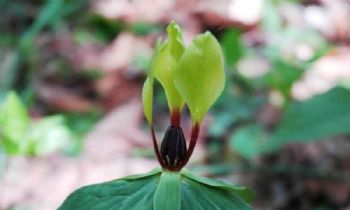
Restoring diverse vegetation along the Atlantic seaboard after devastating hurricanes or replanting forests after destructive wildfires rests mightily upon one tiny but important ingredient: the seed.
Seeds are also important for conserving rare species, from trees to shrubs to other flowering plants. For example, the recently discovered Trillium tennesseense is only known in three locations in East Tennessee.
But seeds must be saved the right way.
Including a species' biology in sample guideline calculations can dramatically improve sampling effectiveness, according to a new study from the National Institute for Mathematical and Biological Synthesis.
For a long time, seed sampling guidelines have typically been quite general: the same recommended minimum sample applied to all species, roughly 50 seeds per population, whether a towering tree, widespread grass, or a small bee-pollinated herb. Such recommendations were based on genetic theory without considering plant ecology and reproductive biology.
In the new study, published today in the journal Biological Conservation, researchers tested the importance of three factors in seed sampling: a species' "selfing" rate, or rate at which a species pollinates itself, its seed and pollen dispersal distances, and whether an annual or perennial.
The first key finding is that sample size should be different for species' with different reproductive biology in order to capture enough genetic diversity, which is critical for biodiversity. Specifically, species that are highly selfing and have low seed dispersal appear to need sample sizes five times as large, the study found. And species that are perennial may also need larger sample sizes.
(...)